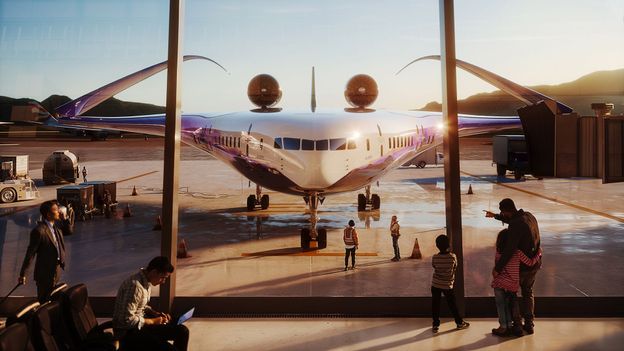Imagine the plane you’re about to board looking less like a long, cylindrical tube with wings and more like a sleek, futuristic manta ray gliding across the tarmac. This isn’t a scene from a sci-fi movie; it’s the vision of the Blended Wing Body (BWB) aircraft, a revolutionary design that promises to reshape air travel as we know it. And here’s the exciting part: these magnificent machines could soon be flying from an airport near you.
The Design That Redefines Flight
At its core, the Blended Wing Body concept marries the fuselage and wings into a single, seamless aerodynamic structure. Unlike traditional aircraft where the fuselage is a distinct cylinder attached to wings, the BWB integrates the passenger cabin and cargo hold directly into the wing itself. This isn’t just a cosmetic change; it’s a fundamental reimagining of aircraft design, driven by a relentless pursuit of efficiency and sustainability.
The primary advantage of this innovative shape lies in its superior aerodynamics. By effectively reducing drag and maximizing lift across the entire airframe, BWB aircraft are projected to be significantly more fuel-efficient than their conventional counterparts. This translates directly to lower operating costs for airlines and, crucially, a substantial reduction in carbon emissions – a vital step towards greener aviation. Furthermore, the design allows for more effective integration and shielding of engines, promising a quieter flight experience for those on board and significantly less noise pollution for communities near airports.
Comfort and Capacity: A New Cabin Experience?
Beyond the impressive environmental and operational benefits, the Blended Wing Body design opens up a world of possibilities for the passenger experience. The wider, more expansive internal volume of a BWB aircraft means a radical departure from the narrow cabin aisles and restrictive seating arrangements we’re accustomed to. Envision a cabin that feels more like a spacious lounge than a cramped tube, with flexible layouts that could include larger seats, more generous legroom, or even innovative communal spaces.
“I’ve always dreamed of flying in something that feels less like a sardine can and more like a spacious lounge,” says avid traveler, Maria Chen. “If blended wings can deliver on that, I’m all in. The idea of a quieter, more comfortable flight is incredibly appealing.”
While the exact configuration of future BWB cabins is still being explored, the potential for an unprecedented level of comfort and customizable space is clear. This could herald a new era where air travel prioritizes passenger well-being and offers a truly differentiated journey.
From Drawing Board to Runway: The Road Ahead
The concept of Blended Wing Body aircraft has been around for decades, but recent advancements in materials science, manufacturing techniques, and computational fluid dynamics are finally bringing it closer to reality. Organizations like NASA, in collaboration with aerospace giants, are actively investing in research and development, building and testing prototypes to iron out the complexities of this ambitious design.
While significant hurdles remain in terms of certification processes – ensuring these novel aircraft meet rigorous safety standards – and scaling up manufacturing for mass production, the momentum is palpable. The increasing pressure on the aviation industry to reduce its environmental footprint, coupled with the desire for more efficient and comfortable air travel, is providing a powerful impetus for the rapid development of BWB technology. We are moving beyond theoretical models and into a phase of tangible prototypes and comprehensive testing, setting the stage for these revolutionary aircraft to transition from experimental facilities to commercial flight paths.
The future of flight is taking shape, and it looks wonderfully different. The Blended Wing Body aircraft isn’t just an upgrade; it’s a paradigm shift poised to deliver quieter, more efficient, and potentially far more comfortable journeys. Prepare to look up and see the future of aviation soaring above.




